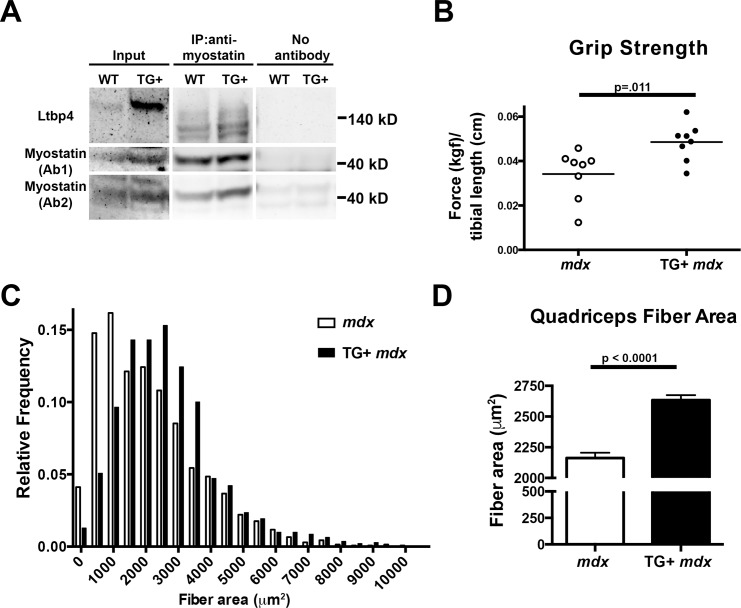Fig 4. LTBP4 interacts with myostatin, and mice overexpressing LTBP4 have increased strength and bigger muscle fibers.
(A) 10 week old TG+ and WT mice were sacrificed and muscle lysates were obtained by combining quadriceps, gastrocnemius, soleus, gluteus, hamstring, and triceps muscles. Lysates were immunoprecipitated with an anti-myostatin followed by immunoblotting with anti-LTBP4 antibody, showing that LTBP4 associates with myostatin in vivo. (B) Forelimb grip strength of TG+ mdx (n = 8) and mdx (n = 8) mice was measured over ten trials, averaged, and normalized to tibial length. (kgf, kilogram force) Twenty week old TG+ mdx mice were significantly stronger than mdx controls (p = .011, Student’s t-test). (C) Fiber area was determined by outlining hematoxylin and eosin stained quadriceps muscle fibers from TG+ mdx mice (n = 7) and mdx controls (n = 6) at 8 weeks of age. A histogram of fiber area shows that TG+ mdx mice had fewer small fibers and an increased number of large fibers. (D) TG+ mdx mice had significantly increased fiber area compared to mdx controls (p<0.0001, student’s t-test)

